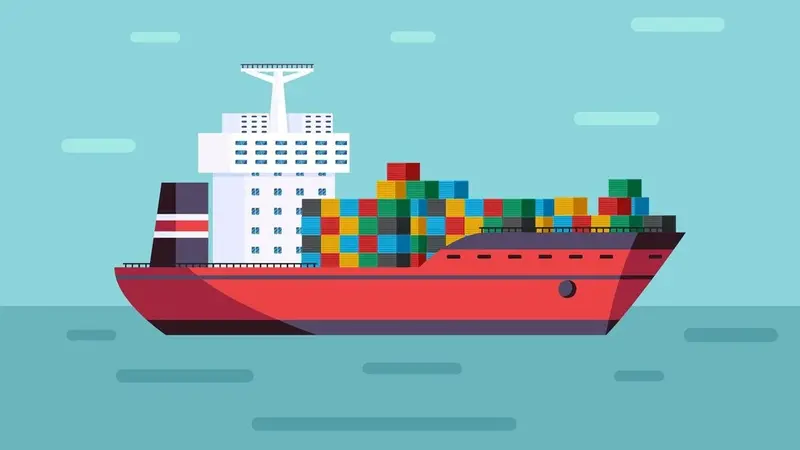In the vast expanse of our world’s oceans, cargo ships serve as the lifelines of global trade, transporting goods across continents and connecting economies. These maritime giants come in various shapes and sizes, each equipped with unique features and capabilities to navigate the challenges of the open sea efficiently.
Today, we embark on a journey to explore the best cargo ships that ply the waters of our planet, showcasing their innovations, technologies, and contributions to international commerce.
The Evolution of Cargo Shipping
Before delving into the specifics of modern cargo ships, it’s essential to understand their evolution. Throughout history, humans have relied on waterways for transportation, and as trade expanded, so did the vessels that facilitated it. From the humble beginnings of wooden sailing ships to the advent of steam-powered vessels and the modern era of container ships, the evolution of cargo shipping has been marked by innovation and progress.
i) Container Ships:
In the contemporary maritime landscape, container ships reign supreme as the primary mode of transporting goods across oceans. These vessels are equipped with standardized containers, revolutionizing the efficiency of cargo handling and port operations. Among the notable container ships, the Maersk Triple E class stands out as one of the largest and most efficient in the world. With their impressive capacity and fuel-efficient design, these giants of the sea exemplify the pinnacle of container shipping technology.
ii) Bulk Carriers:
While container ships dominate the realm of manufactured goods and consumer products, bulk carriers specialize in transporting raw materials such as coal, iron ore, and grains. These vessels come in various types, including ore carriers, bulkers, and grain carriers, each tailored to the specific needs of their cargo. Among the noteworthy bulk carriers is the Valemax class, known for its immense size and capability to transport large quantities of iron ore, essential for the steel industry.
iii) Tankers:
In addition to dry bulk commodities, liquid cargoes such as crude oil and petroleum constitute a significant portion of global trade. Tankers are crucial in transporting these essential energy resources from production sites to refineries and distribution centers worldwide. The largest among them, the Ultra Large Crude Carriers (ULCCs) and Very Large Crude Carriers (VLCCs) can carry millions of barrels of oil across the oceans, ensuring the stability of the global energy supply chain.
iv) Specialized Cargo Ships:
Beyond the categories of container ships, bulk carriers, and tankers, a myriad of specialized cargo vessels cater to niche markets and unique transportation requirements. These include Ro-Ro (Roll-on/Roll-off) ships for transporting vehicles, LNG (Liquefied Natural Gas) carriers for natural gas, and heavy lift ships for oversized cargo such as machinery and equipment. Each of these specialized vessels plays a vital role in facilitating global trade and commerce.
Innovations in Cargo Shipping
The world of cargo shipping is constantly evolving, driven by technological advancements, environmental concerns, and the pursuit of efficiency. From adopting alternative fuels and propulsion systems to implementing digital technologies for route optimization and cargo tracking, innovation is reshaping the landscape of maritime transportation. For example, the emergence of autonomous ships promises to revolutionize the industry by reducing operating costs and enhancing safety.
Challenges and Opportunities Ahead
Despite their indispensable role in global trade, cargo ships face numerous challenges, including regulatory compliance, piracy, and environmental sustainability. The shipping industry is under increasing pressure to reduce its carbon footprint and transition towards cleaner and more sustainable practices. Initiatives such as the International Maritime Organization’s (IMO) Sulphur Cap and the push for decarbonization are driving innovation and encouraging investment in eco-friendly technologies.
However, amidst these challenges lie opportunities for growth and transformation. As the world’s population continues to grow, so does the demand for goods and commodities, creating new opportunities for the shipping industry. Furthermore, the expansion of e-commerce and digital trade presents new avenues for innovation and efficiency in cargo shipping, driving the adoption of advanced technologies such as blockchain and IoT (Internet of Things).
In Conclusion
The realm of cargo shipping presents a dynamic and intricate landscape, encompassing a wide range of vessels, technologies, and obstacles. From the imposing container ships that command international trade routes to the specialized vessels serving niche markets, each contributes significantly to transporting goods across vast oceans.
As we traverse the waters of the 21st century, embracing innovation, sustainability, and collaboration becomes imperative for sustaining the enduring prosperity and adaptability of the cargo shipping sector. Additionally, with the assistance of crane services, crucial for loading and unloading cargo, the industry can further enhance its efficiency and operational capabilities, ensuring it meets the evolving demands of our interconnected global economy.
